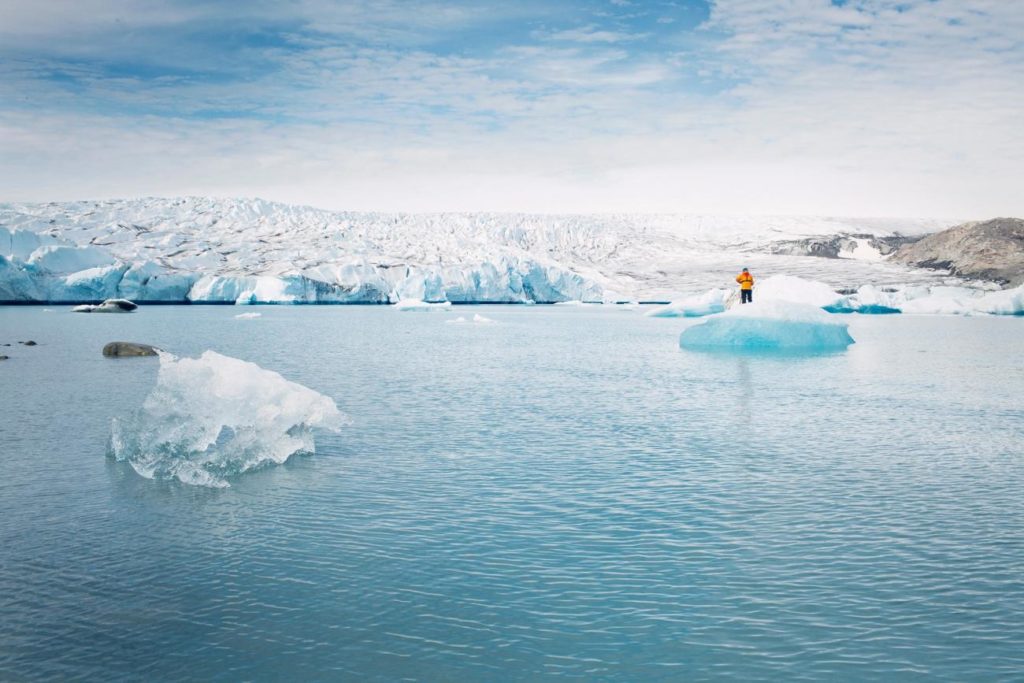
Image: From the expedition to East Greenland, 2012 © Project Pressure
Interview with Klaus Thymann by Unseen Amsterdam.
“In the run-up to this year’s Unseen festival, we will be interviewing the artists behind Project Pressure’s exhibition When Records Melt. This week we caught up with the organisation’s Founder and Director, Klaus Thymann, to discuss what first drew him towards life as a scientist and the way in which Project Pressure combines scientific skill and photography to inspire behavioural change in a thought-provoking and exciting way.
Why did you become a scientist? Can you explain how your science background influenced your photographic praxis?
I never pursued higher education when I was younger as I started shooting professionally at the age of 15. But I always wanted to study. With Project Pressure, we collaborate with a lot of scientists and scientific organisations, so it seemed natural for me to study a degree in environmental science as I was reading a lot of papers and literature in the area. Having a photography background and a scientific education allows me to create projects with artistic depth and a solid scientific foundation. Art is great, but dealing with environmental issues can easily become superficial. Environmental issues are often systemic, globally influenced by multiple factors and associated with a lot of complexity. It is difficult to understand the details and even harder to communicate it; I hope my knowledge can help deliver inspiring as well as comprehensive projects.
What inspired you to found Project Pressure? You started Project Pressure in 2008. What has changed since then and what hasn’t?
I have a deep love for nature and I was getting very anxious about the lack of response to climate change. Unfortunately, scientific facts are not sexy and inviting to engage with. I was hoping to inspire people with Project Pressure to engage with the otherwise difficult subject. In the past 10 years, we have passed the point where climate change can be avoided as there is just too much CO2 in the atmosphere. It is a massive collective failure. Now we have to look at limiting further emissions but also adapting to the effects of climate change. I am not sure this will work, not sure if there is a plan B, but there is definitely no planet B. We only have this earth.
We slowly transferred to using the expression ‘climate change’ instead of ‘global warming’. What do you think the reasons are for this?
The scientific community never used the phrases interchangeably, but the reason for the current separation is the public has a better understanding of the complexity and mechanisms involved. Initially, the general public thought the only effect of climate change would be warming, but I think now with floods, fires and sea-level rising it is clear that climate change is more than just a warming of global mean temperatures, hence the use of the term ‘climate change’.
What other exciting projects do you have lined up for this year?
When Records Melt at Unseen is really just the launch of Project Pressure’s travelling exhibition; we have several venues and museums lined up for shows over the next few years. For instance, in 2019, we’ll show in Vienna at the Natural History Museum. What is really exciting about Project Pressure is how many great artists we work with, there are many more involved than the artists showing at Unseen so we can maintain an element of surprise.”
